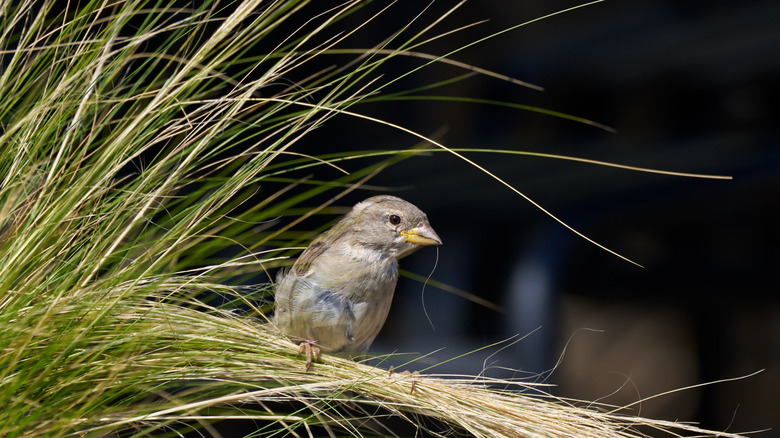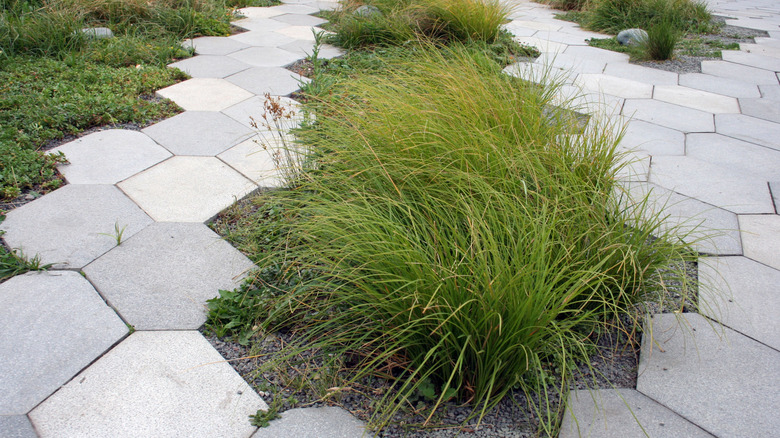The Ornamental Grass That Will Make Your Yard A Bird & Pollinator Paradise
Ornamental grasses are a great way to add texture to and provide a contrasting backdrop for the flowers in your garden. But they aren't just ornamental. Depending on the species you choose, grasses can attract birds and pollinators, adding even more color and life to your garden. For gardeners in North America, one of the best ornamental grasses for attracting songbirds, butterflies, and moths is tufted hairgrass (Deschampsia cespitosa).
Native throughout much of the United States and Canada, tufted hairgrass thrives in wet, partly shady environments in USDA cold hardiness zones 4 through 9. Both fire-resistant and tolerant of wet, poorly drained soils, tufted hairgrass makes a hardy addition to the trickiest of landscapes. Use it as a border, backdrop, or native ground cover alternative to invasive grasses, like European beach grass. It will add year-round texture to your garden while providing a key food source to certain wildlife and pollinators, especially later in the season when most plants have already gone dormant.
While it can tolerate conditions that would kill most other plants, you should still take care to plant it in consistently moist or wet soil, preferably in an area where it will be protected from the summer heat.
Growing tufted hairgrass for birds and pollinators
Tufted hairgrass is a bunching grass that forms a cloud of thin, semi-evergreen leaves and golden flowers and seedheads that will grow anywhere from 20 inches to 5 feet tall. It serves as a larval host to at least 40 species of butterflies and moths. Songbirds will happily forage stands of tufted hairgrass for seeds, while waterfowl use it as nesting cover.
Plant the semi-evergreen grass as a long-lasting border or backdrop in a partly shaded area of your yard where the local birds and pollinators can feast on it and nest in it. In cooler climates where summers are mild, you may even be able to use it as a native turf grass. It's not as tolerant of foot traffic as more common turf species. However, it spreads quickly and tolerates difficult conditions that would be impossible for most turf grasses. That includes everything from fire and heavy metal contamination to freezing temperatures as low as -13 degrees Fahrenheit. Coastal populations of this grass are also salt tolerant.
As hardy as this native ornamental grass is, it's not very tolerant of heat or drought. Whether using it as an ornamental grass or as a lawn alternative, plant it in partial shade if you live somewhere where summer temperatures are consistently above 68 degrees Fahrenheit. In spring, you can divide your ornamental grass to fill in other areas or remove dying sections.

